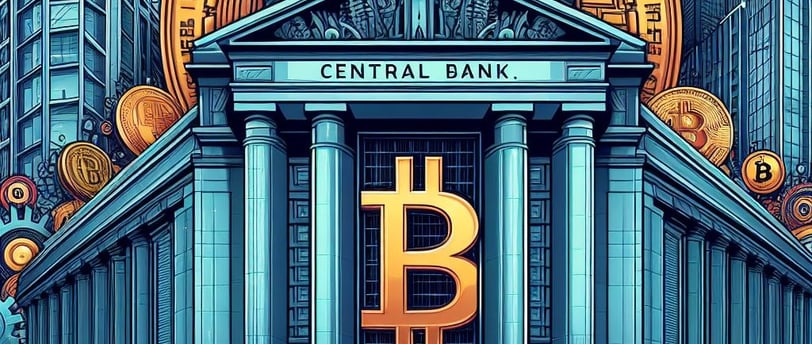Federal Reserve's Influence on Bitcoin: Monetary Policies
Discover how the Federal Reserve's monetary policy decisions impact Bitcoin's value in this insightful article. Explore the effects of interest rate changes and quantitative easing on cryptocurrency markets. Understand the dynamic interplay between central banking actions and digital currency trends. Essential reading for investors and enthusiasts in the evolving world of cryptocurrencies.


Introduction
The Federal Reserve, often referred to as the Fed, plays a crucial role in shaping the economic landscape of the United States. As the country's central bank, it is responsible for implementing monetary policies that impact various aspects of the economy, including interest rates, inflation, and employment. While the Fed's influence on traditional financial markets is widely recognized, its impact on digital currencies like Bitcoin is a relatively new area of study.
The Rise of Bitcoin
Bitcoin, the first and most well-known cryptocurrency, emerged in 2009 as a decentralized digital currency. It operates on a technology called blockchain, which ensures transparency, security, and immutability. Over the years, Bitcoin has gained significant attention and adoption, with its value reaching unprecedented levels. As a result, it has attracted the interest of investors, traders, and financial institutions worldwide.
The Fed's Monetary Policy
The Federal Reserve's monetary policy decisions have far-reaching implications for the economy. By adjusting interest rates and implementing quantitative easing measures, the Fed aims to promote price stability, maximize employment, and support economic growth. These policy tools are primarily designed to influence borrowing costs, consumer spending, and investment decisions.
Interest Rate Changes and Bitcoin
One of the key ways in which the Federal Reserve influences the economy is through changes in interest rates. When the Fed raises interest rates, it becomes more expensive for individuals and businesses to borrow money. This can have a direct impact on investor sentiment towards risk assets like Bitcoin.
Higher interest rates can make traditional financial investments, such as bonds and savings accounts, more attractive compared to cryptocurrencies. Investors may choose to allocate their funds towards these safer options, resulting in a decrease in demand for Bitcoin and a potential decline in its value.
Conversely, when the Fed lowers interest rates, it becomes cheaper to borrow money, encouraging investors to seek higher returns. In such situations, cryptocurrencies like Bitcoin may become more appealing as they offer the potential for significant gains. This increased demand can drive up the value of Bitcoin.
Quantitative Easing and Bitcoin
Quantitative easing (QE) is another monetary policy tool employed by the Federal Reserve during times of economic uncertainty. It involves the purchase of government securities and other financial assets to inject liquidity into the market. The goal of QE is to stimulate economic activity and prevent deflation.
When the Fed engages in quantitative easing, it effectively increases the money supply. This influx of liquidity can have a positive impact on Bitcoin's value. As more money flows into the market, investors may view cryptocurrencies as a hedge against potential inflation and a store of value. This perception can drive up demand for Bitcoin, leading to an increase in its price.
Hawkish vs. Dovish Approaches
The Federal Reserve's monetary policy stance can be classified as either hawkish or dovish. A hawkish approach indicates a more restrictive policy, with a focus on controlling inflation. In contrast, a dovish approach is more accommodative, aimed at stimulating economic growth.
When the Fed adopts a hawkish stance, it typically involves raising interest rates and reducing the money supply. This can have a dampening effect on Bitcoin's value, as it becomes less attractive compared to traditional investments. Investors may perceive higher interest rates as a signal of tighter monetary conditions, leading to a decrease in demand for cryptocurrencies.
On the other hand, a dovish approach, which involves lowering interest rates and implementing QE measures, can be beneficial for Bitcoin. The increased liquidity and lower borrowing costs can drive investor interest in risk assets, including cryptocurrencies. As a result, the value of Bitcoin may rise during periods of accommodative monetary policy.
Conclusion
The Federal Reserve's monetary policy decisions have a significant influence on the value of Bitcoin and other cryptocurrencies. Changes in interest rates and the implementation of quantitative easing measures can impact investor sentiment and drive fluctuations in Bitcoin's market value. Understanding the interplay between central bank actions and digital currency markets is essential for cryptocurrency investors and enthusiasts. By analyzing the effects of the Federal Reserve's monetary policies on Bitcoin, individuals can make more informed decisions and navigate the dynamic world of digital currencies.
